#Pectinodon
Photo
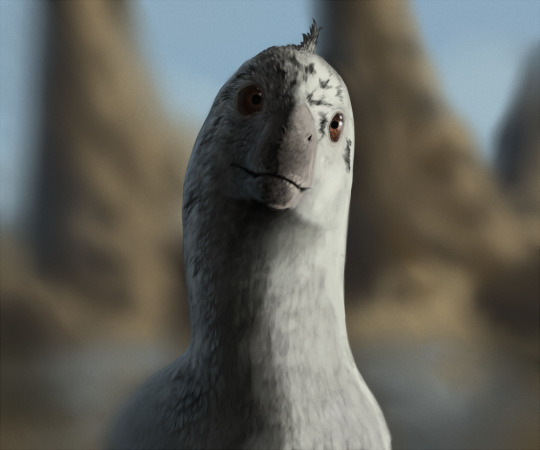
Young Pectinodon from Prehistoric Planet Season 2
#paleoart#palaeoert#art#dinosaur#dinosaurs#prehistoric#paleontology#palaeontology#digital art#pectinodon#pectinodon bakkeri#Troodontidae#theropoda#theropod#prehistoric planet#prehistoric planet 2
375 notes
·
View notes
Text

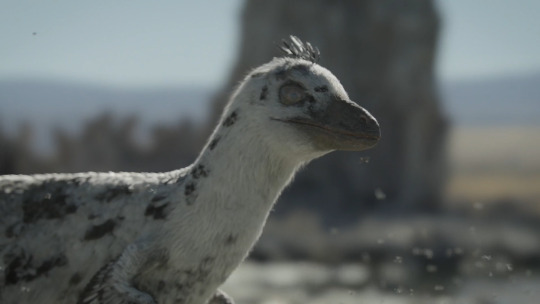

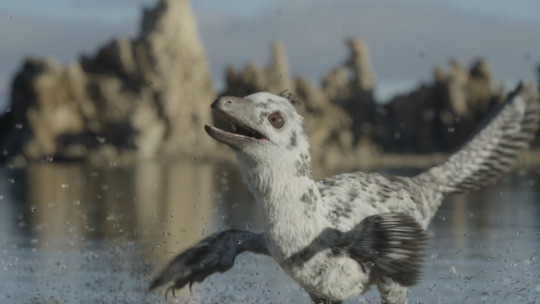



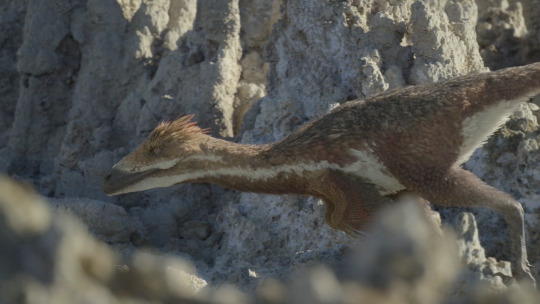
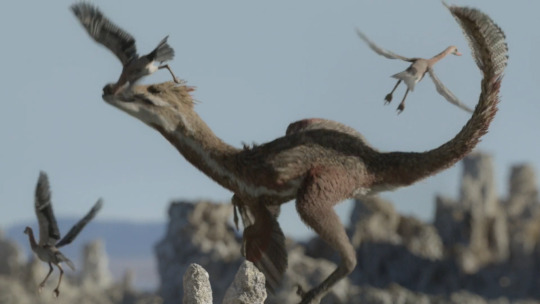

Life of our Prehistoric Planet: Pectinodon bakkeri.
#prehistoric planet#prehistoric planet 2#pectinodon#troodon#dinosaurs#mine#ending this series on my birthday will be back for more if there's a third season#q
160 notes
·
View notes
Photo

To the delight of many, Prehistoric Planet came back this year for a second season, bringing with it a whole cast of new and returning maniraptoran dinosaurs. How do these depictions line up with the latest science? I discuss this in my review.
#Palaeoblr#Birblr#Prehistoric Planet#Dinosaurs#Birds#Corythoraptor#Kuru#Velociraptor#Austroraptor#Pyroraptor#Imperobator#Pectinodon#Hesperornis
194 notes
·
View notes
Text
It Came From The Wastebasket #05: The Trouble With Troodon
Troodontids were small bird-like theropod dinosaurs, lightly built with slender legs and sickle-shaped "raptor" claws on the second toes of their feet. They had fairly big brains proportional to their body size, rather like modern birds, and their large forward-facing eyes had good depth perception. Owl-like asymmetrical ears in some species gave them a very keen sense of hearing, suggesting they may have been nocturnal hunters using sound to pinpoint the location of small prey.
The original specimen of the namesake of the group, Troodon formosus, was a serrated tooth discovered in the 1850s, about 77 million years old and originating from the Late Cretaceous Judith River Formation fossil beds in Montana, USA. It was so little to work with that it was initially mistaken for a lizard tooth, then during the 20th century it was recognized as belonging to a dinosaur and spent time classified as a megalosaurid, then a pachycephalosaur, then finally as a small theropod similar to the Mongolian Saurornithoides.
In the late 1980s it was merged together with multiple other troodontids (including Stenonychosaurus of speculative "dinosauroid" fame), and since Troodon had been the first of all of them to be named it took priority as the genus name.
And then for a while every single Late Cretaceous troodontid specimen from North America was also lumped into Troodon, turning it into a wastebasket taxon.

The problem was that all these troodontids came from locations separated by thousands of kilometers and millions of years of time, and it's unlikely that they all actually represented just one single species. But they were only known from rare fragmentary remains, making distinguishing them from each other difficult, and the original Troodon tooth didn't really have any distinctive features either – it turns out most troodontid teeth all look exactly the same!
It was becmoning increasingly dubious whether Troodon was even a valid name at all, and during the 2010s several paleontologists began trying to sort the mess out. The old names Pectinodon and Stenonychosaurus were revived, and some 'Troodon' fossils were also split off and given completely new names, becoming Albertavenator and Latenivenatrix*.
* Although Latenivenatrix might not actually be distinct enough from Stenonychosaurus to justify having a separate name.
As of 2022, Troodon itself is now in a sort of taxonomic limbo, with some paleontologists abandoning it as a dubious name while others are still arguing in favor of continuing to use it. The name could potentially be properly rescued if the original tooth can be clearly linked to better fossil material, letting Troodon take over priority again from one of the other better-established troodontids, or by defining a new type species similar to what happened with Iguanodon.
…But with how incredibly generic that tooth is, both of those options would be very difficult.
———
Nix Illustration | Tumblr | Twitter | Patreon
#it came from the wastebasket#wastebasket taxon#taxonomy#troodon#stenonychosaurus#pectinodon#albertavenator#latenivenatrix#troodontid#maniraptora#theropod#dinosaur#paleontology#art#science illustration#paleoart#palaeoblr
629 notes
·
View notes
Photo

Pectinodon!
the baby pectinodon from prehistoric planet catching flies!
commmission me | Twitter | ko-fi
Posted using PostyBirb
202 notes
·
View notes
Text
Pectinodon

Pectinodon is a troodontid from the Hell Creek and Lance Formations of North America. The teeth, which give Pectinodon its name, are sharp and possess deep comb-like serrations on the rear edge. It is known only from these teeth, but it can be inferred that Pectinodon was a swift biped that was covered in feathers. Troodontids are known to have had unusually large brains among dinosaurs, comparable to those of living flightless birds. Their eyes were also large, and pointed forward, indicating that they had good binocular vision, and may have even been able to see well in the dark.
72 notes
·
View notes
Text

Pride Dinos! Pride Dinos! Pride Dinos!
#art#artists on tumblr#digital art#pride 2022#pride month#lgbtq+#asexual#gay#bisexual#lesbian#transgender#pachycephalosaurus#mononykus#pectinodon#ankylosaurus#brachiosaurus#paleoart
240 notes
·
View notes
Text
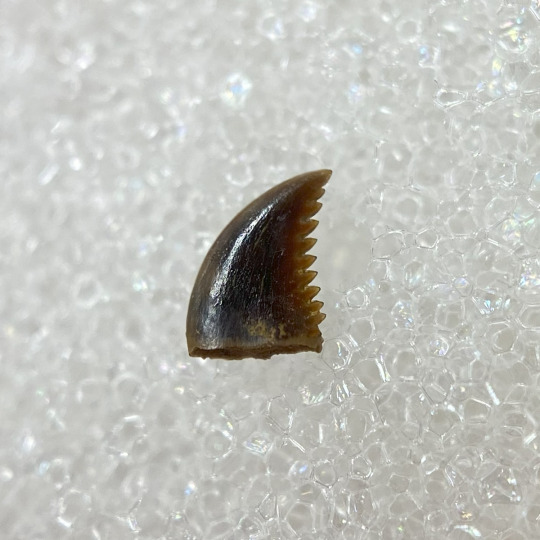
A dinosaur tooth of the troodontid tooth taxon Pectinodon bakkeri from the Hell Creek Formation in Meade County, South Dakota, United States. Unlike the similar cf. Troodon sp., the denticles of Pectinodon do not hook upwards. The serrations of Pectinodon have been described as being comb-like. The word “pecten” which makes up part of this dinosaur’s name means “comb” with the name of the genus meaning “comb tooth”.
#dinosaur#fossils#paleontology#palaeontology#paleo#palaeo#pectinodon#troodontidae#troodontid#theropod#cretaceous#mesozoic#prehistoric#science#paleoblr#ペクティノドン#トロオドン科#恐竜#化石#古生物学
19 notes
·
View notes
Text
Pectinodon bakkeri portrait.

#pectinodon#tooth#paleoart#digital drawing#digital doodle#this post is satire btw#this is probably gonna piss someone off but frankly I don’t care
6 notes
·
View notes
Text

Pectinodon
Pectinodon — рід троодонтових динозаврів-тероподів, відомий з кінця маастрихтського віку пізньої крейди (66 млн.р.т.). В даний час він містить єдиний дійсний вид, Pectinodon bakkeri (іноді класифікується як Troodon bakkeri), відомий лише за зубами.
Повний текст на сайті "Вимерлий світ":
https://extinctworld.in.ua/pectinodon/
#pectinodon#dinosaurs#theropoda#late cretaceous#troodon#prehistoric planet#apple#david attenborough#bbc#hans zimmer#cretaceous#maastricht#prehistoric#north america#extinct#fossils#paleontology#paleoart#sciart#ua#creatures#animals#ukraine#ukrainian#мова#україна#український tumblr#тварини#палеоарт#digital art
11 notes
·
View notes
Text
4 notes
·
View notes
Text

Robert probably doesn't know about the Troodons hidden in Jurassic Park like Most of the Ingen Employees
(i forgot he has another head without his hat but whatever)
#jurassic park#dinosaurs#dinosaur toys#jurassic world#robert muldoon#troodon#troodon pectinodon#universal studios#jurassic world domion#jurassic world fallen kingdom#mattel#jurassic park the game#jurassic park 1993#jurassic world mattel#jurassic park mattel#toy photography#bob peck#telltale games#hammond collection#palaeontology
12 notes
·
View notes
Text
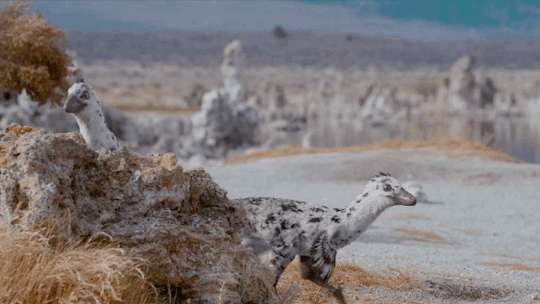
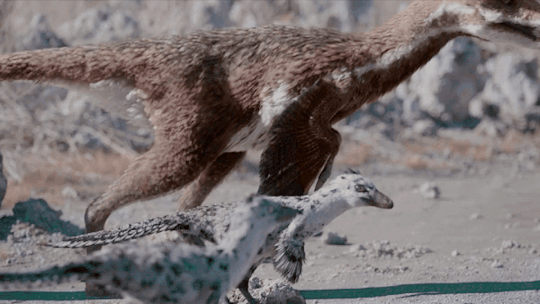
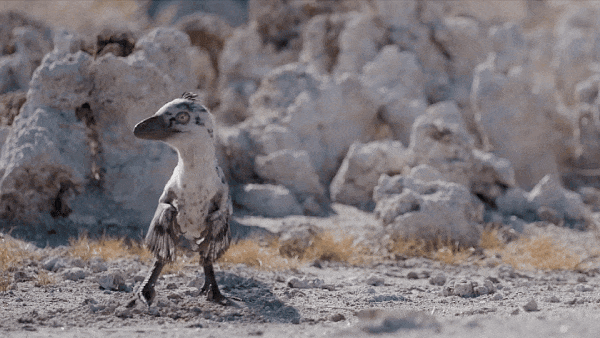
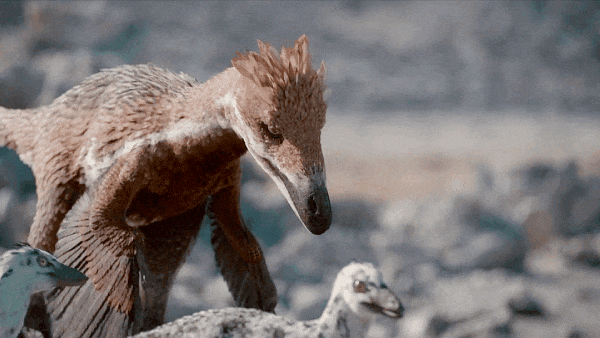
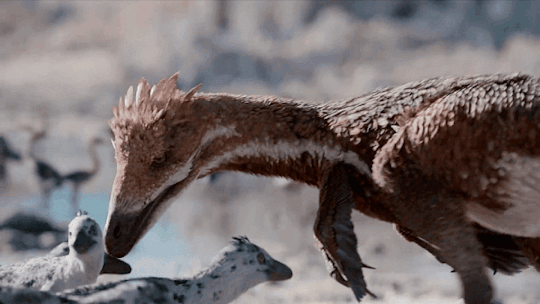
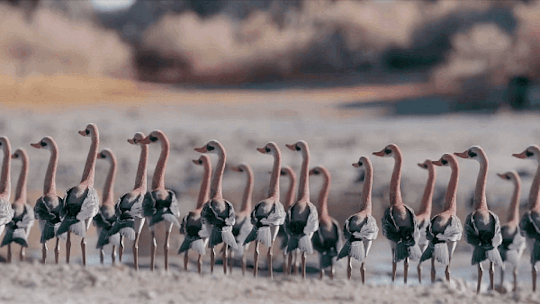
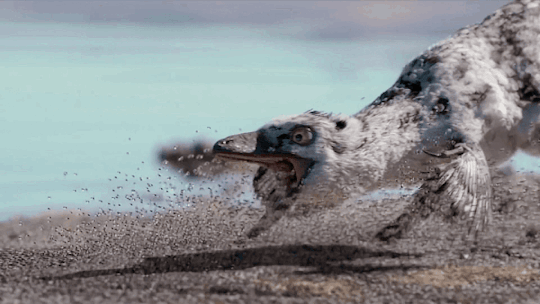
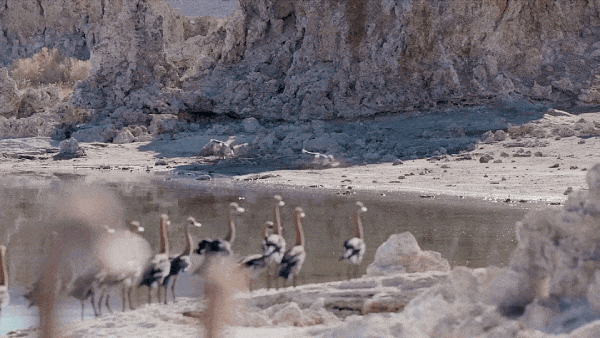

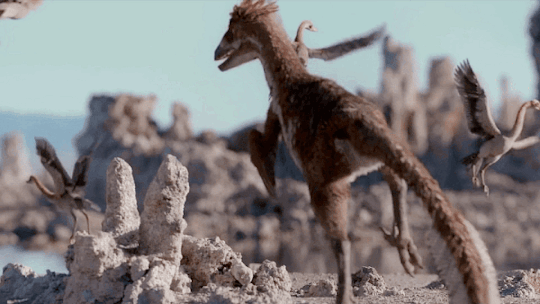

A family of Pectinodon. They're feathered but flightless. And they're led by their father. These dinosaurs and the Styginetta are both drawn here by a strange seasonal bonanza.
3K notes
·
View notes
Note
[park ranger voice] now it’s important to be mindful of the local birds! this area is home to a lot of dromaeosaurids and troodontids, the animals you might know of by their more common name: the raptors. these little guys are a lot less dangerous than the movies would have you believe, but that doesn’t mean you shouldn’t worry at all! our local raptors range from turkey sized species like pectinodon and dromaeosaurus to the much larger dakotaraptor, which can get up to eighteen feet long! the small ones are skittish and likely to run away from any humans they see, but dakotaraptor will essentially ignore most humans unless you act overtly threatening towards them. when you’re setting up camp, remember to keep all of your food bags in a high up place where they won’t get broken into by any curious critters. raptors are incredible jumpers and climbers, so we recommend tying them up at least ten to twenty feet up. when you’re on our trails, it’s a good idea to have bells tied to your gear, to make sure our raptors can hear you coming. even the big ones will generally try to stay away from you if they can help it! the small troodontids can get curious, but they don’t mean you any harm, and if you leave them be they’ll do the same to you. if you run into a raptor, don’t panic! don’t run away either, or they’ll probably chase you just on instinct, even if they don’t actually want to eat you. give them a wide berth, and make sure they know you’re there and that you aren’t a threat. when they’re threatened, raptors will spread their wings like this and raise that big feathered tail, making themselves look big and scary to ward off larger predators. if you see this threat display, that’s your cue to slowly back away, making sure they can see that you aren’t interested in going after them. on the other hand, if they’re lowering themselves like this, that might mean they’re getting a little too interested in you! so if you see that, spread your arms like this, open up your jacket if you have one, to make yourself look big. the point isn’t to fight them, it’s to get them to back off on their own because you’re too big to eat. slowly back away while making yourself look big like that and making a lot of noise. but i have to stress that raptors almost never attack humans, so you won’t have to use this advice except in the rarest of circumstances. our local raptors are mostly solitary hunters, so they won’t be going after large prey like humans, instead preferring animals around their size or smaller. even the largest ones don’t usually see humans as worth the effort! just remember to respect these beautiful animals, and stay away from their nests, which you might find in sheltered woodland areas off of the trails. it’s the brooding season right now, and some of our animals here can get REALLY protective, which is why it’s important to stay on the trails! remember that these animals are more scared of you than you are of them, so just let them live at a distance. take only pictures, leave only footprints. we have pamphlets here about the different species and the conservation efforts for them if you’re interested! if you’d like to donate, every penny helps, and we need all we can get to protect these beautiful birds and their habitats. thank you all for your time, see you on the trails!
(wanted to write something based on bear safety PSAs i used to see for hikers, sorry it got long lol)
holy crap its amazing
138 notes
·
View notes
Text


Something kind of interesting, for a brief second Attenborough comments like a usual paleodoc, mentioning the "rising rocky mountains" and calling the Styginetta "primitive relatives of ducks." Usually the show tries to avoid directly referencing the modern day
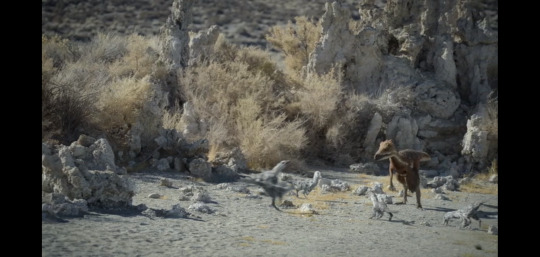


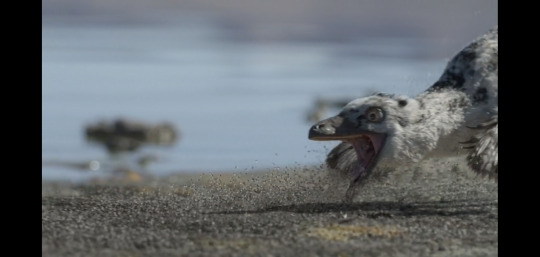
What a great segment! The Pectinodon family is really cute and I love the showcasing of new and weird behaviors that I constantly praise this show for doing, this is really what makes PHP unique to me.

A bit off topic but Styginetta or some other kind of Presbyornithid is high on my wish list for inclusion in Prehistoric Kingdom, mainly because "Cretaceous Duck Flamingo" sounds like a great addition to any dinosaur zoo.
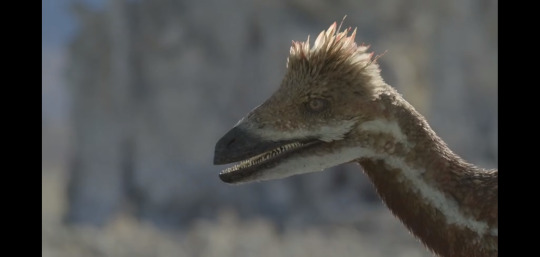
Damn, Troodontid teeth are scary!


The dad gets something a bit meatier for dinner by snatching a bird right out of the air in a moment clearly meant to evoke wild cats like Servals. The censor rocks are really goofy though.
116 notes
·
View notes
Text
The genre of paleodocumentary – documentaries focusing on extinct ancient life – reemerged with Apple TV’s Prehistoric Planet in 2023. It draws heavily on traditional nature documentaries, tying together disparate segments with a common theme, and echoing the prestige of productions like Planet Earth, The Hunt, and The Blue Planet with renowned presenter Sir David Attenborough. This pedigree situates Prehistoric Planet as successor to the last landmark paleodocumentary series, the BBC’s wildly successful Walking With Dinosaurs. Released in 1999, the series set a standard that has scarcely been met since. Two and a half decades later, Prehistoric Planet might represent a renaissance, apart from one glaring flaw that undermines the project’s educational value.
Where most wildlife documentaries utilize on-location filming and stock footage, paleomedia by nature cannot rely on actual footage. Instead, a combination of practical effect modeling and computer-generated imagery (CGI) is used to depict extinct creatures. As this is prohibitively expensive, material often gets reused long past its expiration date. One clip from Walking With Dinosaurs has featured in at least three ‘talking head’ style documentaries, as recently as 2016.
Cross-pollination between documentaries is common in other respects. Many of Prehistoric Planet’s segments are extrapolated from documentary footage of modern animals, and as such are largely speculative in their presented behavior and physical appearance (neither of which fossilize well). While its visual material is a new breath of life for the genre, the copycat elements and influence of extant wildlife are such that the onscreen byline, ‘Planet Earth, 66 million years ago,’ might more accurately be, ‘Planet Earth, 66 million years ago.’
This may actually be beneficial; although derivative, the format is familiar and effectively demonstrates extinct creatures’ probable complexity and versatility. Documentaries are designed for accessibility — they speak to a layman’s understanding, encourage development of a deeper interest, and double as entertainment — even as they counter misinformation stemming from other forms of entertainment. Alongside the equivalent Tyrannosaurus rex, Velociraptor-the-movie-monster dominates the public consciousness, having featured as a primary plot element in no fewer than six massively popular entertainment productions. Prehistoric Planet aims to correct resulting misconceptions, drawing a distinction between Velociraptor, animal, and Velociraptor, movie monster, in the familiar format of a nature documentary.
Considering that the goal of any documentary is to distill dense, difficult-to-digest information into the need-to-know, science communicators shoulder an important responsibility, because they serve as an educational touchstone. Jaques Cousteau was the educational touchstone for oceanography just as Carl Sagan was the touchstone for an entire era of astrophysics and Stephen Hawking the touchstone for theoretical physics. For seventy years, David Attenborough has been the touchstone for wildlife and ecology.
Those who take up that role are obligated to present their data with care. Data may be disproven or incomplete, but to encapsulate 25 years of paleontological advancement, given those limitations you need to get the science right — and in one critical respect, Prehistoric Planet drops the ball.
The final episode of Prehistoric Planet’s second season features Pectinodon and Styginetta. Attenborough’s narration states that every year, “Styginetta, a primitive relative of modern ducks, stop here on their travels. And they’re not alone; dinosaurs are here, too.” The implication that Styginetta are not dinosaurs in their own right misrepresents the science, and might have been amended with the addition of a single word: "other dinosaurs are here, too." If the writers, editors, researchers, producers, and fact checkers uniformly didn’t catch this, Attenborough should have; he has (and is) the authority, having been a titan of wildlife presentation since before the advent of color television. He should have changed the script.
This neglect of the scientific consensus is disconcerting, the equivalent of the next Planet Earth including a line in reference to ‘whales, and other fish…’ Not all dinosaurs were wiped out by the asteroid impact; modern-day birds, it has been established, are the dinosaurs that survived. Alongside the extinct dinosaurs, Prehistoric Planet features their contemporaries, the flying pterosaurs and marine reptiles such as mosasaurs and plesiosaurs, which were wiped out and have no surviving lineages. Lacking living examples to draw upon, Prehistoric Planet embraces speculative potential to present these extinct creatures as interesting — but educational media cannot sacrifice accuracy for entertainment. Styginetta are recognizable as birds, having the expected beaks, feathers, and flight-capable wings. Notably, Pictinodon are also feathered, and yet this correlation is never directly addressed – another missed opportunity. Both look photorealistic, move energetically, and read as alive in a way that has only been made possible in recent years, thanks in part to advances in CGI revolutionized by the production of Jurassic Park.
In the post-Jurassic Park era, it is impossible to consider early paleomedia (e.g., the work of Ray Harryhousen) as plausible. Clunky stop motion using puppets or clay, charming as it is, cannot be mistaken for reality. A photorealistic degree of visual acuity is possible with CGI, but this development predicates an ethical responsibility to avoid blurring the lines of truth. Even though (one hopes) nobody actually believes there was a camera running 66 million years ago, the viewer’s brain still buys it and processes it as visual input.
There is an obligation to communicate when something is speculative; an ethical responsibility to not misrepresent known science. And while conflating the speculative with the factual is an endemic problem within the genre, most paleomedia simply does not have the reach and influence of Prehistoric Planet. When a production has the backing of both Apple Inc. and the BBC, and is being played on repeat on every showroom test screen at Best Buy (as was recently the case) it has weight behind it. The farther the reach, the more critical it is to get it right.
One only needs to look at Jurassic Park's impact on the public perception of dinosaurs to corroborate this. ‘Velociraptors’ in those films are nominally based on Deinonychus and Utahraptor — but because the name Velociraptor appealed more, in accordance with the ‘rule of cool’ it was taken from the turkey-sized creature in the fossil record and reconfigured as a reptilian grizzly bear.
Misrepresented data is thus embedded in the social mythos, becoming exponentially more difficult to correct as time goes on. Prehistoric Planet is many people’s first introduction to non-avian dinosaurs (et al.) as anything other than movie monsters. In fact, multiple segments throughout both seasons are in direct dialogue with Jurassic Park; there is no reason Velociraptor specifically should be as heavily featured as it is, except to counteract Jurassic Park’s pervasive misrepresentation. That Prehistoric Planet excludes birds from the category of dinosaurs will inevitably set back the entire genre. Just as Prehistoric Planet attempts to redress Velociraptor, the next production to cover this ground will be forced to redress Prehistoric Planet.
In an age of scientific illiteracy, the documentary is one of the most accessible formats for communicating the basic information necessary to understand the world around us. Those involved in the production of educational material have a responsibility to their audience and to their topic, and for all its many strengths, Prehistoric Planet fails to deliver.
#was talking about my critical essay assignment w folks on here so I might as well post it for easy access lol#yall know i LOVE prehistoric planet#the assignment was to take smth we love to task for somethign it failed to do and uhhhhhh yeah birds Are dinosaurs#prehistoric planet#mar talks#mar does human things#ngl the working title is It’s a Bird! It’s Plain! It’s an Egregious Omission! but im thinking i may change that to something a lil more#uhhhhhhhh#scholarly#before i turn it in for a grade lmao
4 notes
·
View notes